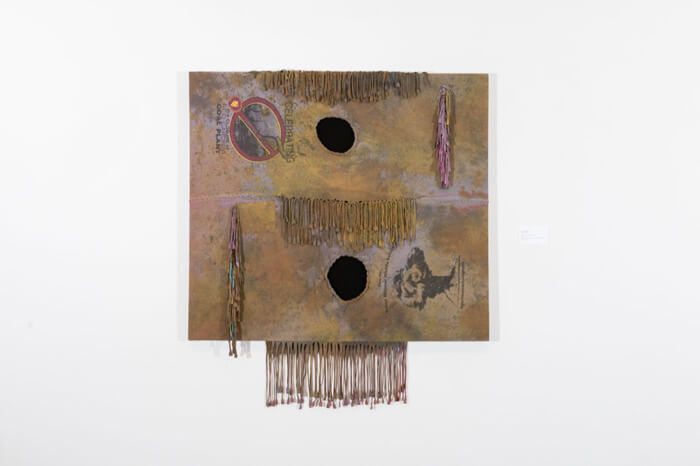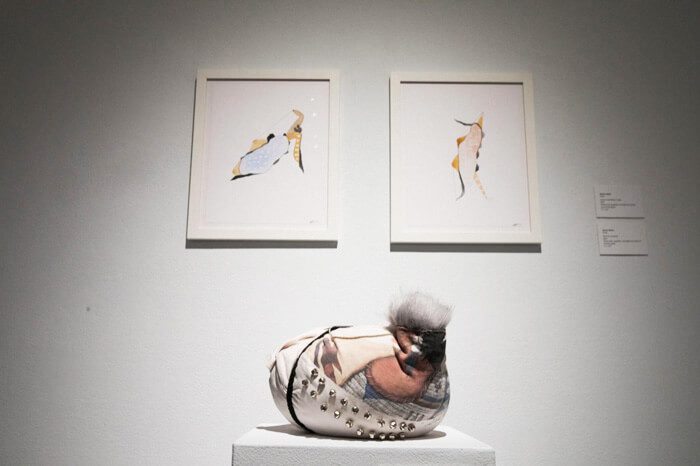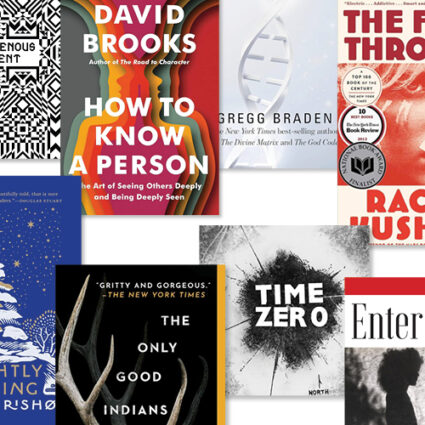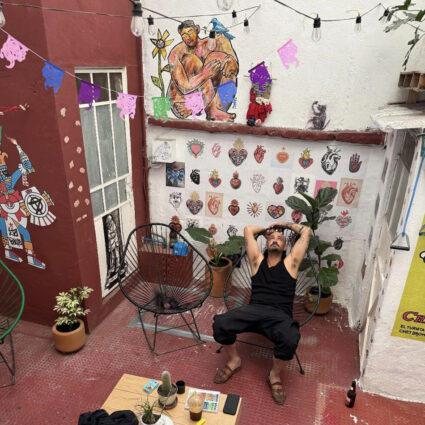AH’-WAH-NEE brings together Indigenous women artists throughout the Southwest for an exhibition about feminine Indigeneity at Donna Beam Gallery at the University of Nevada, Las Vegas.

AH’-WAH-NEE
November 1-December 10, 2021
Donna Beam Fine Art Gallery, University of Nevada, Las Vegas
Contemporary feminist Indigenous art often grapples with gendered materials, traditional techniques, colonial influence on feminine and gendered identity, and the role of woman and femininity in traditional culture. Similarly, the art works in AH’-WAH-NEE (Paiute for “balance”) evoke many of these themes, including motherhood, environmentalism, materiality, memory, and family.
AH’-WAH-NEE brings together Indigenous women artists from the Southwest region for an exhibition on the traditional lands of the Paiute nation, at the University of Nevada, Las Vegas’s Donna Beam Fine Art Gallery. Curator Fawn Douglas (Southern Paiute) seeks to create a space for Indigenous representation—Douglas’s work as an activist and artist led her to recently open NUWU Art + Activism Studios, a unique space for artist studios, galleries, local businesses, performance spaces, and community events.
Her work concerns land use and environmentalism from an Indigenous perspective. In Nuwuvi: Our Lands Our Bodies, on display in the AH’-WAH-NEE exhibition, dyed t-shirt material mimics the appearance of buckskin stretched into a square canvas. Two black holes sit ominously in the middle of the canvas while graphics and protest slogans in support of protecting sacred land are placed throughout.
There are active campaigns across the country to protect sacred Indigenous land. Right outside Las Vegas is Avi Kwa Ame, or Spirit Mountain, a sacred site to the Mojave. Organizers of Honor Spirit Mountain hope to preserve the space as a national monument. But a national monument is not enough.
For Indigenous women and environmentalism, the land and humans are two parts of one whole, not separate planes of existence. For that reason, Native art practices often emphasize working with what you’ve got, materials from the land around you. Douglas’s traditional Paiute baskets, constructed from installation wire, show resourcefulness and a refusal to throw anything away.

Beaded guns by Noelle Garcia (Klamath and Paiute) sit at the intersection of technologies and memories. Guns and beads are both settler-colonial introductions, and technologies that quickly became essential to Indigenous life and art. In Garcia’s gun sculptures, the firearms are tied to memory, with lovingly rendered lithographs and drawings of family scenes placed above the beaded sculptures. This presentation appears like a shrine, but with the potential for danger.
Garcia’s work has long investigated personal memory as it relates to heritage and culture, with previous works of beaded Doritos and cigarettes. Here, the life-sized guns, though rendered impotent, still hold a power in them. They recall a masculine sensibility, leaving room for tenderness and complexity.
Natani Notah (Diné/Navajo) has long worked with appropriative imagery, including a series of works drawing upon the Land O’Lakes (now retired) Indigenous-woman-as-brand logo. In Lady in Beads, Notah repurposes a t-shirt with a fetishized Indigenous woman to comment on the construction of the body and identity. The shapeshifting form, which is the size of a baby or small animal, abstracts this mythicized imagery and questions its purpose and usefulness in Indigenous womanhood.
Tucked almost in the corner of the spacious room is a small bronze sculpture by Roxanne Swentzell (Santa Clara Pueblo). The polished metal contrasts the matte earthy tones of her well-known clay work. The figure stands proud, hands moving towards the hips, with a clay vessel on top of her head. In its scale, it is anti-monumental, despite being made with the material of a monument.
The exhibition’s main goal is to educate the viewer on Indigenous matters and issues in contemporary society. On the whole, the exhibition succeeds in bringing together a variety of works from Indigenous women in the Southwest. The multimedia works of more up-and-coming artists (Douglas, Garcia, Notah) stand out in their bold statements, while many of the more traditional works, including that of the prolific Swentzell, disappear or feel less unified in approach.

Overall, the exhibition’s survey format leaves the viewer with more questions than answers about the state of Indigenous women’s art today—and maybe that’s the point. Perhaps, with this exhibition sitting within a public university gallery, AH’-WAH-NEE’s artists want us to do our own research.
AH’-WAH-NEE is scheduled to remain on display through December 10, 2021, at Donna Beam Fine Art Gallery, University of Nevada, Las Vegas, 4505 South Maryland Parkway.
Correction 12/7/2021: An earlier version of this story stated that Avi Kwa Ame, or Spirit Mountain, is a sacred site to the Hopi and Chemehuevi Paiute, not the Mojave.




